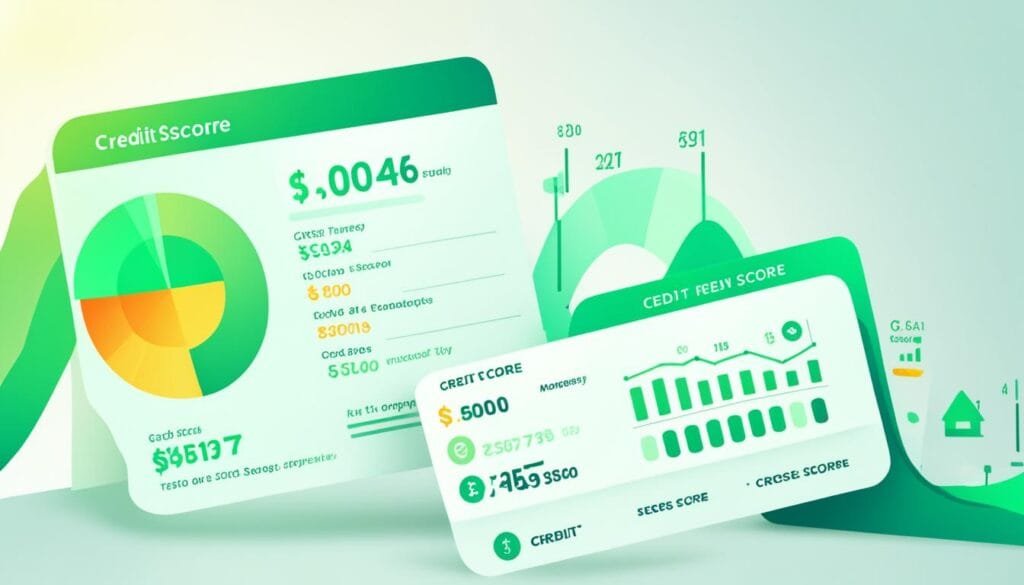Peer-to-peer lending, also known as P2P lending, has emerged as a promising solution in the world of finance. It allows individuals to directly lend and borrow money through online platforms, eliminating the need for traditional financial institutions. This innovative approach has gained significant popularity in recent years, opening up new avenues for borrowers and investors alike.
Key Takeaways:
- Peer-to-peer lending offers a direct and efficient alternative to traditional banking systems.
- By bypassing intermediaries, borrowers can access competitive interest rates and flexible terms.
- Investors can diversify their portfolios and potentially earn higher returns through peer-to-peer lending.
- P2P lending platforms provide an opportunity for financial inclusion, benefiting individuals who may have difficulty obtaining loans from traditional sources.
- Thorough research, diversification, and staying informed are key strategies for successful peer-to-peer lending.
The Rise of Peer-to-Peer Lending and its Evolution
Peer-to-peer lending has emerged as a transformative alternative to traditional banking systems. This innovative form of financing has evolved and adapted to the changing financial landscape, offering borrowers competitive interest rates, quick application processes, and financial inclusion.
The growth of peer-to-peer lending can be attributed to two key factors. Firstly, the financial crisis of 2008 highlighted the limitations and flaws of traditional banking, leading individuals and businesses to seek alternative lending solutions. Secondly, advancements in technology have paved the way for online lending platforms, enabling direct lending between individuals and opening up new opportunities for borrowing and investing.
“Peer-to-peer lending has democratized the lending process by cutting out the middleman, creating a more efficient and accessible system for both borrowers and investors,” says John Matthews, CEO of P2P Finance.
This evolution in lending practices has disrupted the traditional banking model by providing greater access to credit for borrowers who may have previously been excluded. Peer-to-peer lending platforms have streamlined the loan application process, making it faster and more convenient for borrowers to access funds.
Furthermore, the direct nature of peer-to-peer lending eliminates the need for intermediaries, reducing costs and enabling borrowers to secure loans at more competitive rates. This increased competition within the lending market benefits borrowers, as lenders strive to offer attractive interest rates and loan terms.
As the popularity of peer-to-peer lending continues to grow, it has expanded beyond personal loans to include business loans, student loans, and even real estate financing. This diversification has created more opportunities for borrowers and a wider range of investment options for lenders.
The Benefits of Peer-to-Peer Lending
Peer-to-peer lending offers numerous benefits for borrowers and investors alike. For borrowers, the advantages include:
- Competitive interest rates: Peer-to-peer lending platforms often provide borrowers with lower interest rates compared to traditional banks.
- Flexible borrowing options: Borrowers can choose loan terms that suit their financial needs, such as loan amount and repayment period.
- Financial inclusion: Peer-to-peer lending has made it easier for individuals with limited credit history or non-traditional income sources to access funding.
For investors, peer-to-peer lending presents unique opportunities:
- Diversification: Investors can spread their risk by investing in multiple loans across different sectors, borrower profiles, and loan grades.
- Control over investments: Peer-to-peer lending allows investors to select the specific loans they want to fund, giving them greater control over their investment portfolio.
- Potential for higher returns: By cutting out intermediaries, peer-to-peer lending enables investors to earn attractive returns on their investments.
As the financial landscape continues to evolve, peer-to-peer lending is positioned as a key player in the world of alternative lending. Its ability to connect borrowers directly with lenders, coupled with technological advancements, has revolutionized the lending market and created more financial opportunities for individuals and businesses alike.
The Process and Benefits of Peer-to-Peer Lending
Peer-to-peer lending, also known as P2P lending, has revolutionized the way individuals and businesses access loans and invest their funds. This section explores the straightforward process of peer-to-peer lending and highlights the numerous benefits it offers to borrowers and lenders alike.
The Peer-to-Peer Lending Process
In the world of peer-to-peer lending, the process begins with borrowers creating loan listings on online platforms. These listings provide detailed information about the loan amount, purpose, and interest rate. Borrowers have the opportunity to present their financial needs, attracting potential lenders.
Lenders, on the other hand, browse through these loan listings, assessing the creditworthiness of borrowers and evaluating the potential returns. This direct interaction between borrowers and lenders eliminates the need for intermediaries, streamlining the lending process.
Once lenders have identified suitable loan opportunities, they fund the loans they choose. The funds provided by multiple lenders collectively finance the loan, reducing reliance on traditional banking institutions.
Borrowers repay the loans in manageable installments, as agreed upon in the loan terms. The online platform handles the repayments and accurately distributes them to the lenders. This seamless repayment process ensures convenience and efficiency for both borrowers and lenders.
The Benefits of Peer-to-Peer Lending
Peer-to-peer lending offers numerous advantages that attract borrowers and lenders alike.
- Lower Interest Rates: Peer-to-peer lending platforms often offer competitive interest rates compared to traditional financial institutions. This affordability makes it an attractive option for borrowers seeking funding.
- Flexibility: Peer-to-peer lending provides borrowers with more flexibility in terms of loan amounts and repayment schedules. This allows borrowers to tailor the loan to their specific needs and financial capabilities.
- Financial Inclusion: Peer-to-peer lending opens up opportunities for individuals who may have difficulty accessing loans through traditional banks. It promotes financial inclusion by providing loans to borrowers with limited credit history or unconventional income sources.
For lenders, peer-to-peer lending offers:
- Diversification: Lenders can spread their investments across multiple loans, reducing the risk associated with investing in a single borrower. This diversification strategy helps protect lenders’ funds and potentially increases their overall returns.
- Control over Investments: Peer-to-peer lending allows lenders to choose the loans they fund, giving them full control over their investment decisions. Lenders can evaluate each borrower’s creditworthiness and select the loans that align with their risk appetite and investment goals.
The process and benefits of peer-to-peer lending demonstrate why this alternative lending model has gained significant traction in recent years. Borrowers enjoy lower interest rates, flexibility, and increased access to loans, while lenders benefit from diversification and control over their investments.

Next, we will explore strategies for successful peer-to-peer lending, equipping borrowers and lenders with the knowledge and tools they need to maximize their results in this dynamic financial landscape.
Strategies for Successful Peer-to-Peer Lending
To unlock the full potential of peer-to-peer lending, borrowers and lenders can implement several strategies that can optimize their experience and financial outcomes. Here are some key strategies to consider:
- Thorough Due Diligence: Before participating in peer-to-peer lending, it’s essential to conduct thorough due diligence on the lending platforms and individual borrowers. Research the platform’s reputation, track record, and security measures. Evaluate the borrower’s creditworthiness, financial stability, and loan purpose to assess the level of risk involved.
- Diversification: Diversifying your loan portfolio helps mitigate risks associated with defaults. By spreading your investments across multiple loans from different borrowers, you reduce the impact of potential defaults on your overall returns. Consider investing in loans with varying risk levels and loan grades.
- Understanding Loan Grades and Risk Levels: Most peer-to-peer lending platforms assign loan grades or risk levels to borrowers based on their creditworthiness. It’s crucial to understand these grading systems and risk assessments to make informed investment decisions. Higher-risk loans may offer higher interest rates but also carry a greater chance of default.
- Reinvesting Earnings: Reinvesting your earnings in peer-to-peer lending can significantly enhance your overall returns over time. By reinvesting the principal and interest received from successful loans, you can compound your earnings and potentially accelerate wealth accumulation.
- Stay Informed and Monitor Loan Performance: Peer-to-peer lending regulations may evolve, and loan performance can fluctuate over time. Stay informed about any regulatory changes or updates that may impact your investments. Regularly monitor your loan portfolio’s performance, assess repayment trends, and take necessary actions to manage any potential risks or issues.
- Leverage Automation Tools: Many peer-to-peer lending platforms offer automated investment options. Consider leveraging these tools to streamline your investment process, diversify your portfolio more efficiently, and save time in managing your loans.
- Seek Professional Advice: If you’re new to peer-to-peer lending or have a substantial investment portfolio, it may be beneficial to seek professional advice to develop a tailored strategy. Financial advisors specializing in peer-to-peer lending can offer valuable insights and help you make informed decisions based on your specific financial goals and risk tolerance.
Key Strategies for Successful Peer-to-Peer Lending
| Strategy | Description |
|---|---|
| Thorough Due Diligence | Conduct comprehensive research on platforms and borrowers to assess the level of risk. |
| Diversification | Spread investments across multiple loans to mitigate risks of defaults. |
| Understanding Loan Grades and Risk Levels | Comprehend the grading systems and risk assessments to make informed investment decisions. |
| Reinvesting Earnings | Compound returns by reinvesting principal and interest from successful loans. |
| Stay Informed and Monitor Loan Performance | Stay updated on regulations and monitor loan performance to manage risks effectively. |
| Leverage Automation Tools | Utilize automated investment options to streamline portfolio management. |
| Seek Professional Advice | Consult with financial advisors to create a personalized peer-to-peer lending strategy. |

Can Peer-to-Peer Lending Help Improve My Credit Score?
Peer-to-peer lending can indeed boost your credit score. By making timely payments on your P2P loans, you can demonstrate financial responsibility and improve your creditworthiness. With a positive borrowing history, you can potentially raise your credit score and qualify for better financial opportunities.
Conclusion
Peer-to-peer lending has emerged as a game-changer in the world of finance, offering individuals and businesses access to financial opportunities previously inaccessible through traditional banking systems. By connecting borrowers directly with lenders and utilizing technology, peer-to-peer lending, or P2P lending, has revolutionized the lending market.
One of the key advantages of peer-to-peer lending is the competitive interest rates it offers. Borrowers can secure loans at lower rates compared to traditional banks, saving them considerable amounts in interest payments. Additionally, the flexibility provided by P2P lending platforms allows borrowers to access funds quickly and efficiently.
Furthermore, peer-to-peer lending promotes financial inclusion. It provides an alternative borrowing option for individuals who may have been rejected by traditional lenders due to their credit history or lack of collateral. This democratization of lending opens up opportunities for those who may have been overlooked by traditional financial institutions.
Looking ahead, peer-to-peer lending is poised to play a prominent role in shaping the future of personal finance. As the industry continues to evolve, it will likely introduce innovative features and improved lending processes. Regardless of whether one is borrowing or investing, understanding the peer-to-peer lending process along with implementing effective strategies can lead to successful outcomes in this dynamic and rapidly growing sector.
FAQ
What is peer-to-peer lending?
Peer-to-peer lending, also known as P2P lending, is a form of online lending that allows individuals to borrow and lend money directly without involving traditional financial institutions.
How does peer-to-peer lending work?
Peer-to-peer lending works through online platforms where borrowers create loan listings, specifying the loan amount, purpose, and interest rate. Lenders then choose which loans to fund, and borrowers repay the loans in installments. The platform facilitates payments and distributions to lenders.
What are the benefits of peer-to-peer lending for borrowers?
Peer-to-peer lending offers borrowers lower interest rates, flexibility in loan terms, and increased financial inclusion by providing access to financing that may not be available through traditional banking systems.
What are the benefits of peer-to-peer lending for investors?
Peer-to-peer lending allows investors to diversify their portfolios, have control over their investments, and potentially earn higher returns compared to traditional investment options.
How can I maximize the potential of peer-to-peer lending?
To maximize the potential of peer-to-peer lending, it is important to conduct thorough due diligence when evaluating platforms and borrowers, diversify your loan portfolio, understand loan grades and risk levels, reinvest earnings, stay informed about regulations, monitor loan performance regularly, and seek professional advice when needed.

